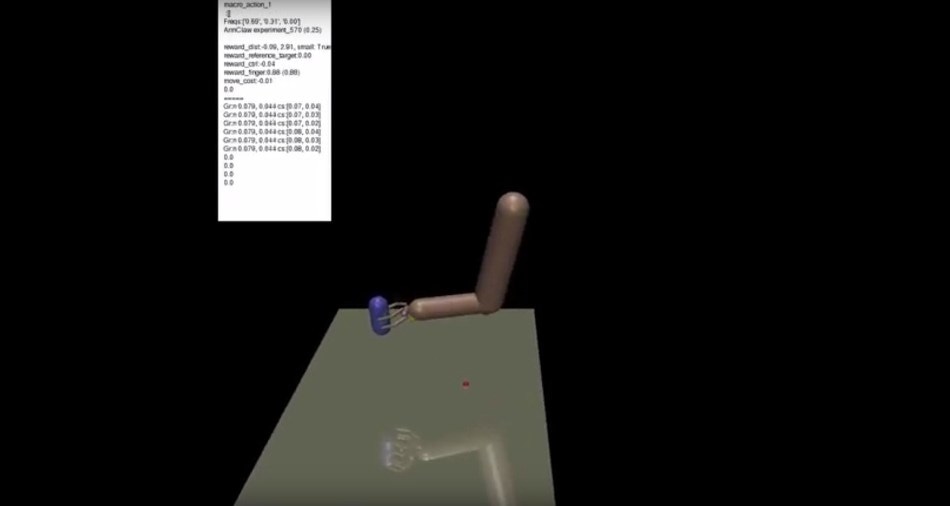Sep 15 2017
deepsense.ai’s paper has been recognized by the General Chairs of the Conference on Robot Learning (CoRL) as one of 11 in the reinforcement learning and robotics category. It will be presented in November at Google’s headquarters in Mountain View.
 The methods developed by deepsense.ai’s team are not limited to robotic arms, but could be used, for example, to train humanoid robots to combine single steps into a walk or a run. Watch short videos with the robotic arm actions simulated during research: https://goo.gl/xMCjdL (Credit: deepsense.ai)
The methods developed by deepsense.ai’s team are not limited to robotic arms, but could be used, for example, to train humanoid robots to combine single steps into a walk or a run. Watch short videos with the robotic arm actions simulated during research: https://goo.gl/xMCjdL (Credit: deepsense.ai)
In a recent research project, members of deepsense.ai’s machine learning team, Maciej Klimek, Henryk Michalewski and Piotr Miłoś, trained a robotic arm to grip a can of coke using reinforcement learning – in other words, through trial and error. The particular method the team developed was selected for presentation at the prestigious new robotics conference, CoRL 2017. The conference focuses on the intersection of robotics and machine learning and is being organized with the help of the International Foundation of Robotics Research (IFRR). deepsense.ai’s ‘Hierarchical Reinforcement Learning with Parameters’ will be featured along with 10 other standout archival papers on reinforcement learning and robotics selected for presentation at the conference and publication after the event.
The novelty of the approach presented in the paper comes from a clever division between simpler micro‑actions and general goals. The methods developed by deepsense.ai’s team are not limited to robotic arms, but could be used, for example, to train humanoid robots to combine single steps into a walk or a run.
According to Henryk Michalewski, Senior Data Scientist at deepsense.ai and an assistant professor at the University of Warsaw, “In recent years reinforcement learning has brought a number of striking new ideas to practical computer science. First, the DeepMind team managed to create bots which achieved superhuman performance in arcade games. Then, using a more sophisticated training methodology, they created a bot which beat the top human player at Go. A few weeks ago Open AI showed a bot that defeated the best human players at DOTA 2. At deepsense.ai, we also research reinforcement learning used in robotics, and we’re happy to have our work recognized on the international AI scene”.
Watch short videos with the robotic arm actions simulated during research: